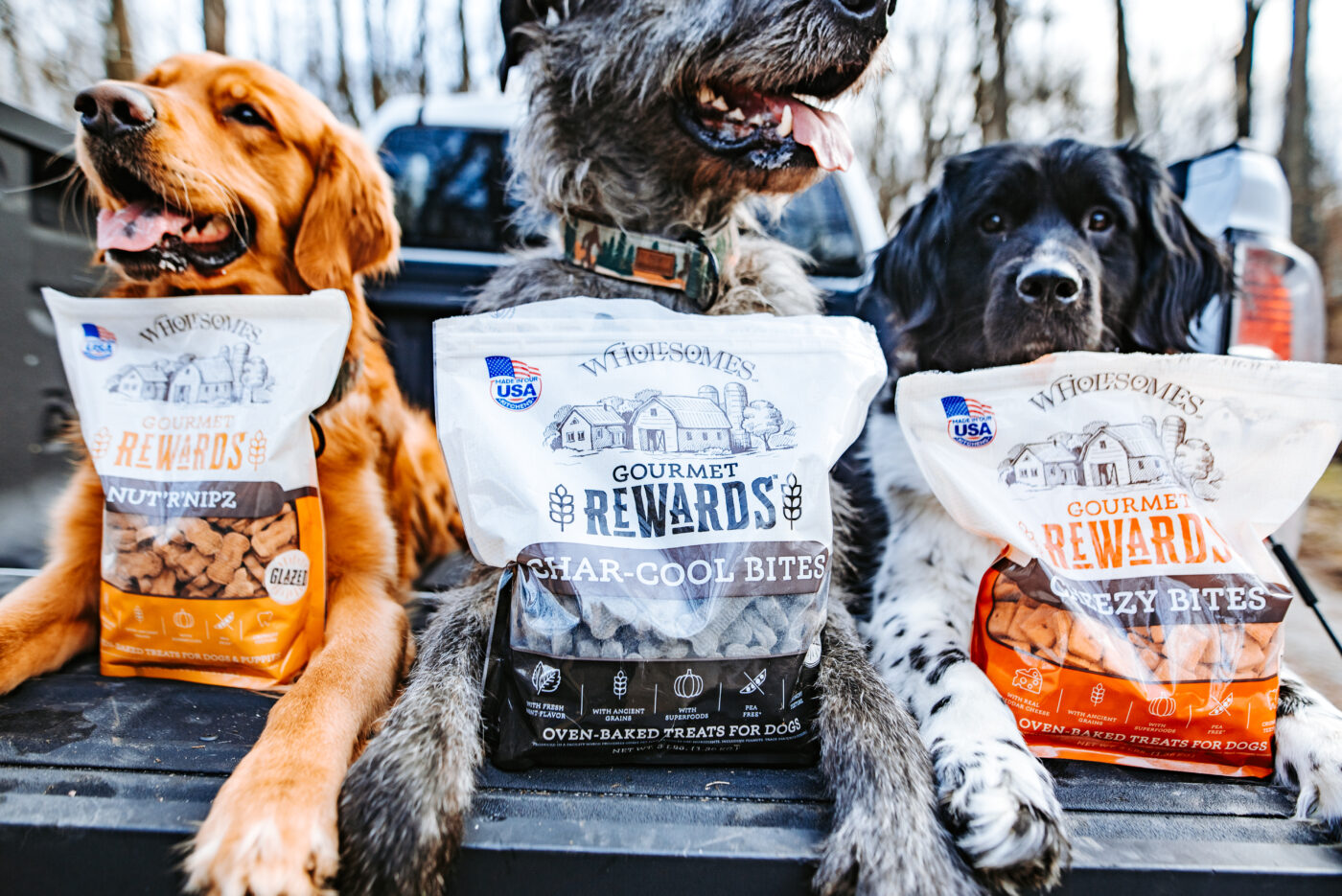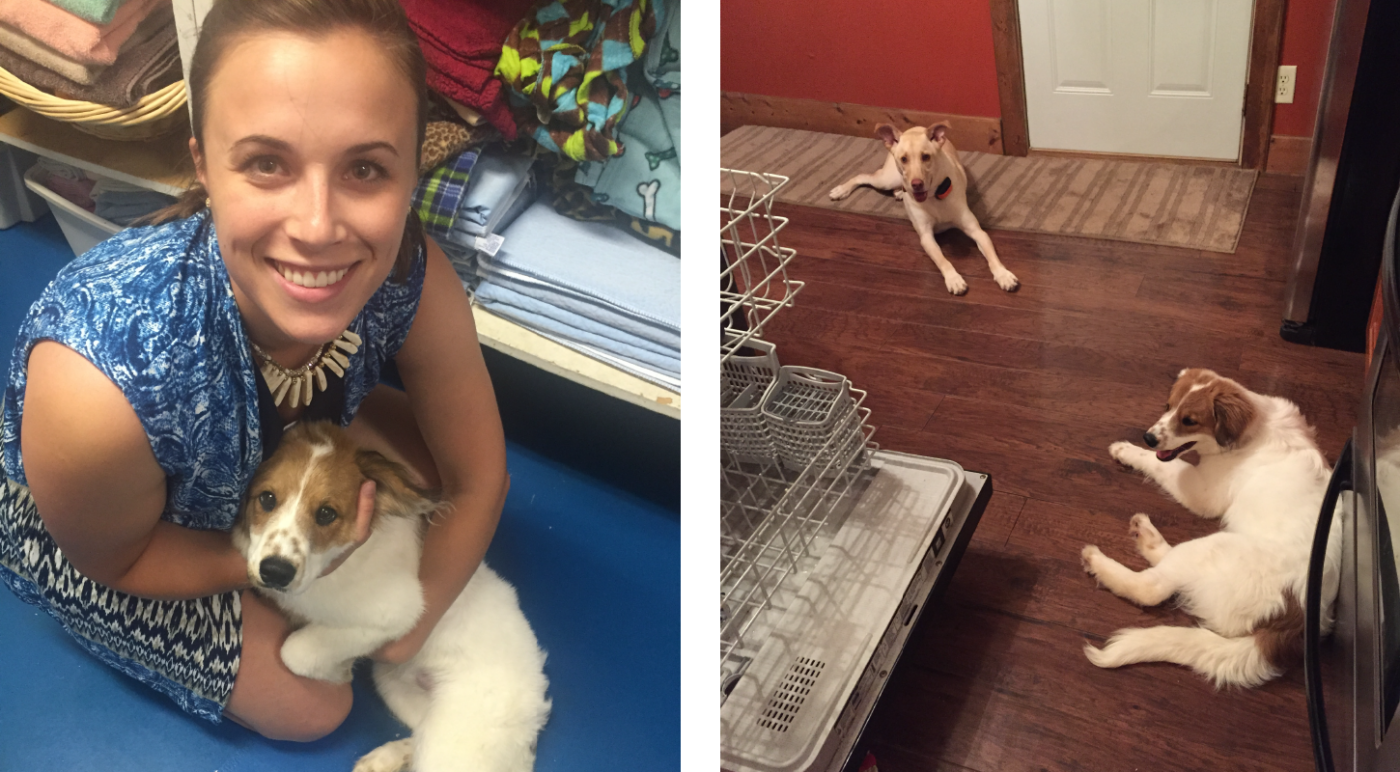How to Introduce Dogs to Each Other
By Ali Oliver
Are you itching to get another dog? Have you fallen into a trap of puppy fever? I’ve been there, done that, and have some tips and tricks you might be interested in hearing. Pet owners can oftentimes overlook the importance of preparing to bring home one pet, let alone the prepwork needed for adding a second dog into the mix. If you’re hoping to make this a smooth transition, here’s everything I learned (and put into action…mostly!) when bringing home a second dog.


First I must ask, are you wanting to bring a puppy home, or are you scoping out adult dogs for your new addition? There will be altered approaches to each scenario. Two adult dogs meeting for the first time will look very different than if you’re introducing an energetic, wild puppy to your loyal, 6-year-old furball. Keep reading for tips on how to introduce a puppy to your older dog, and/or suggestions on how to build trust between two adult dogs. These tips will apply whether or not either dog is properly trained.
Slow and Steady
It’s a good idea to take a slow approach, no matter the dogs’ ages. Before making any lasting commitment, schedule a time when your dog and the new dog or puppy can meet and interact. It’s important to pick a neutral area so that neither dog acts territorial.
I like to think there are three stages to any new introduction. These include assessment, interaction, and approval.
Assessment
With both dogs held on leashes, let them assess each other, visually, from a far distance. This allows them to be in each other’s presence, without feeling immediately threatened. Sometimes simply being in close proximity to a strange dog can set off alarm bells in their body. As the pet parent, keep hold of your current dog while another person holds onto the new dog. Your role is to assess your dog’s body language and adapt accordingly. Is he being aggressive, standoff-ish, or overly attached to you? If he seems to be reacting well to the new dog, you can move through to the next stage.
Interaction
Once they’ve given each other the one-over, and you feel okay to proceed, leave your dog with another handler, walk over to the new dog, and engage with it. Get down on its level and pet it lovingly. It’s very important that you are calm, confident, and happy to help show your dog that there is no reason to be alerted about approaching this strange animal. After this, go back to your dog and take over handling the leash again. Lead your dog over to the new dog and let the dogs interact naturally. They may run through a series of actions like sniffing each other, pawing at each other, or growling at each other. Once they establish some boundaries, they’ll start to feel more comfortable around each other.


When bringing a puppy to an older dog you’ll need to keep in mind that puppies have completely different energy levels than mature dogs. The puppy might cross a boundary and annoy the older dog simply by wanting to play. Sometimes you need to let them feel it out and learn a few lessons on their own. Let the older dog have his chance to exert his dominance over the puppy, while you monitor the dogs behaviors of course. The older dog may playfully swat the puppy, or hold him down on the ground. As long as neither dog is harmed, this type of interaction is appropriate and necessary for the development of their relationship.
Approval
If you’re noticing positive interaction between both dogs, the initial approval from both sides is there. Although things started off smoothly, be aware that there’s still a lot of work to be done to grow that relationship once you take both dogs home. Continue these tips and suggestions for every interaction they have for several days or weeks. Build the foundation early. Slow and steady, let them interact naturally with your supervision (as long as no harm is being done), and reward their good behaviors! Petting and loving on them is a much-needed reward, as dogs are very loving creatures at heart, but don’t forget about treats as a secondary reward as well.
Find a treat your dog loves and fuel their good behaviors by giving them little tasty rewards along the way. Our Wholesomes jerky treats are perfect for this! They’re full of great nutrition and soft enough to break into smaller pieces for training purposes. Or if your dog prefers something crunchy, check out our Wholesomes Rewards oven-baked biscuits.
What If They Don’t Like Each Other?
Dogs are primitive animals with a competitive spirit and an instinct to fight, not flee. Competing for the ‘alpha dog’ role is a natural occurance when multiple dogs are together. You may experience this when you bring home a second dog. If irritated or threatened, adult dogs show dominance in response. This can come in the form of barking, biting, or swatting and can create a dangerous situation if not carefully guided and monitored. If your dog’s get into a brawl of any kind do NOT use your body to break it up. Your instinct might be to grab either dog and pull them away, but the safest way to separate the dogs is to use a long-handled object to intervene from a distance. If you have a broom, stick, or anything of the sort nearby, grab it and try to place it between the two dogs as a way to create space between them.
Living in Harmony
Remind yourself that any relationship takes time, even for dogs. Stick firm to the plan and it’ll pay off. Just like many things in life, repetition is key. Dogs can be creatures of habit and are extremely teachable, so if you give them the love and attention they need, they’ll succeed and you’ll succeed in a multi-dog household.
